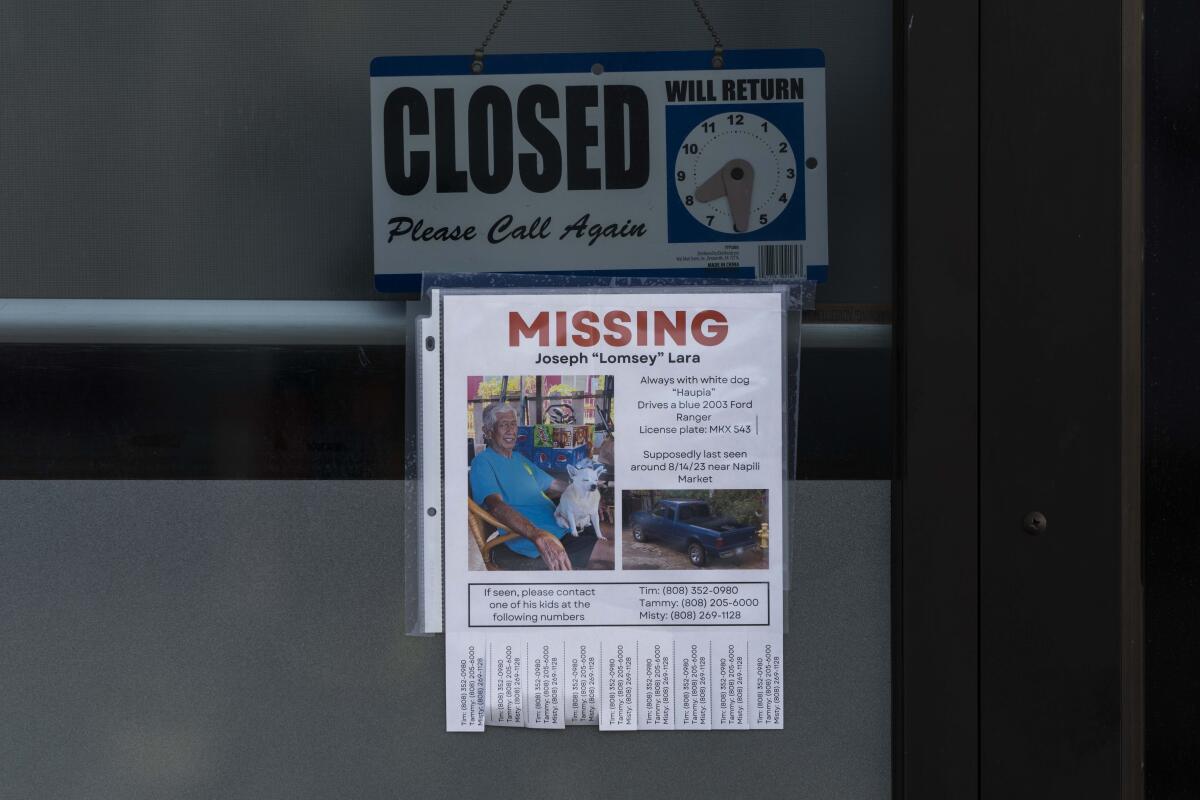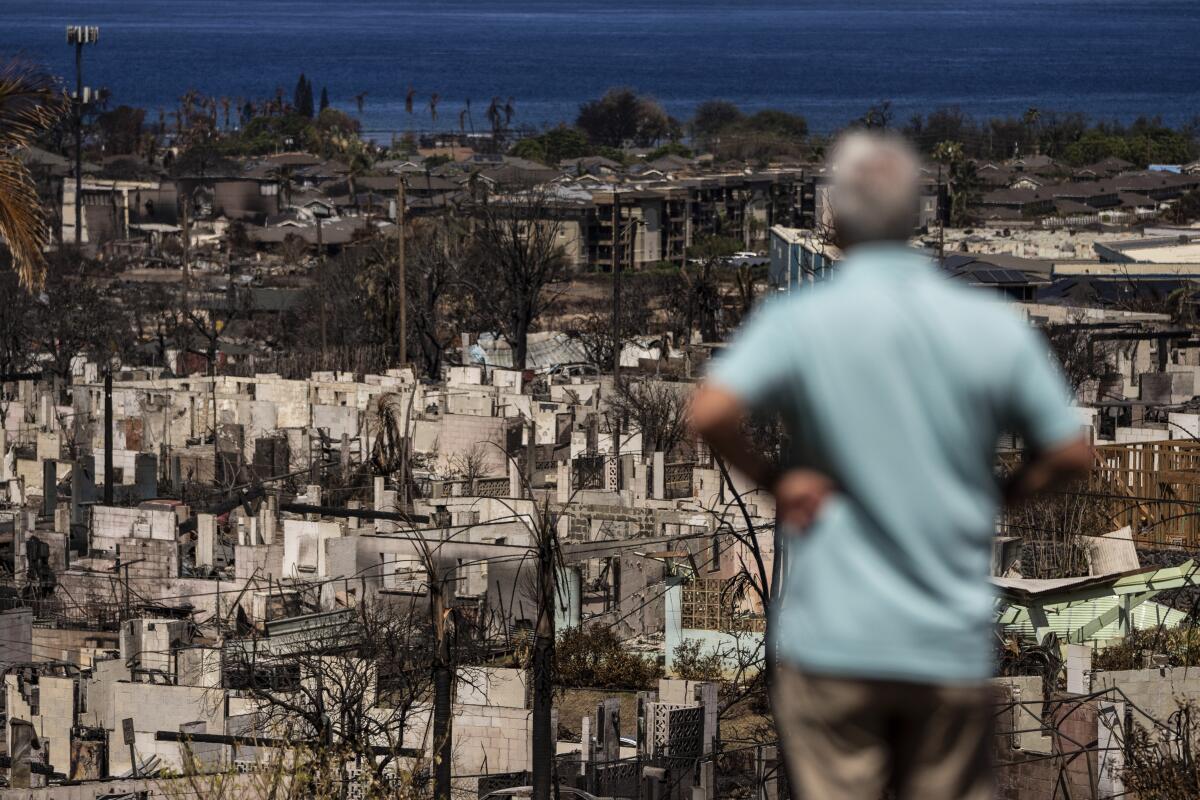After recovery comes identification.
With new rapid DNA technology, investigators no longer have to send all their material to labs with sophisticated equipment, highly skilled technical operators and huge backlogs — a process that can take months or years.
Among the experts that California deployed to Maui are Kim Gin, the former Sacramento County coroner who used rapid DNA technology to identify Camp fire victims, and Lt. Jarrett Morris of the Santa Barbara County Sheriff’s Office, who used the same method after the Conception dive boat fire killed 23 people in 2019.
Chico State forensic anthropologist Eric Bartelink, left, and a team of experts work to identify human remains after the 2018 Camp fire in Paradise, Calif.
(Jason Halley / Chico State )
The Camp fire was the first mass casualty disaster to use the ANDE Rapid DNA system to compare the DNA of remains with the DNA of close family members.
A sample — a tiny fragment of bone or an oral swab — is put into a chip a little bigger than a computer hard drive, which is then inserted into a black box that is an air compressor and computer that performs data interpretation. Within 96 minutes, the system can develop a DNA profile.
Only 22 Camp fire victims were identified using conventional methods, including fingerprints, dental records and surgical devices, such as knee replacements, breast implants and pacer machines, according to a 2020 study in the Journal of Forensic Sciences. A far greater number, 62, generated DNA IDs.
“If there’s bones or tissue available, DNA can be abstracted from it,” said Morris.
After the Conception fire, officials were able to identify all the victims within 10 days.
“We knew who was on that boat, we had a manifest, so we knew where to start,” Morris said. “In this incident, we don’t know exactly who we’re dealing with. We don’t know exactly where they were, where they came from, if they had moved from one place to another.”
Lahaina is also a more complicated site for identification than Paradise because its historic downtown on the water’s edge was a bustling tourist site with a harbor, museums, galleries, bars and souvenir stores.
Ultimately, Morris said, not all the bodies may be identified by rapid DNA technology. In challenging cases, in which bones are severely burnt, traditional labs can carry out more advanced abstraction of the DNA.

A missing-person flyer for Joseph “Lomsey” Lara is posted on the door of a business in a shopping mall in Lahaina, Hawaii. Forensics experts are trying to identify remains found after the Maui wildfires.
(Jae C. Hong / Associated Press)
The final challenge is getting family members to provide DNA samples.
Collecting a DNA sample is a straightforward process, requiring a simple buccal swab rubbing a Q tip six times on the inside of each cheek.
So far, just over 120 relatives of the Lahaina missing have come forward to provide DNA samples — significantly lower than in other major disasters. After the Camp fire, 255 people provided DNA.
“We are still below where we had hoped to be,” said Maui Prosecuting Attorney Andrew Martin, who is running the Family Assistance Center in Kaanapali. The more family members who provide samples, he said, the more chance officials have of identifying a body.
Lahaina is home to a high number of immigrants — nearly a third of residents are foreign born and 40% are Filipino — which means a significant proportion of family members who can provide DNA samples live abroad and face hurdles in getting swabs to the island.
Some family members may be displaced and unaware of the need to provide samples. Others may fear their DNA will go into state and federal databases.

A man in Lahaina views the aftermath of the wildfires.
(Jae C. Hong / Associated Press)
Martin and other officials have stressed repeatedly on local news that DNA samples will be used only to identify those who perished in the wildfire.
“The only thing that their DNA is used for is identifying their loved ones,” he said. “That’s it.”
After days scouring the burn zone, Bartelink said he hoped the remains yielded genetic DNA and more families come forward to provide swabs. Only then can the missing be accounted for.
“The closure process often starts with just knowing what happened, where were they found, making sure that they’re identified,” he said. “We really are doing this for the families.”


